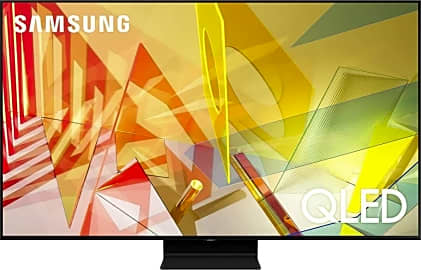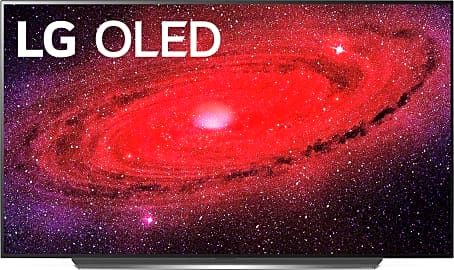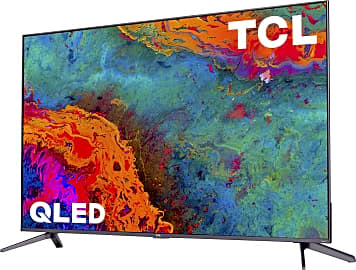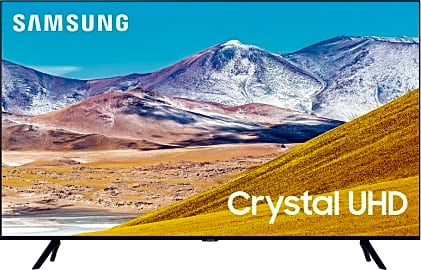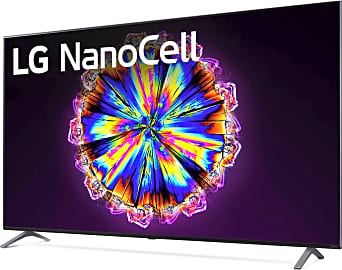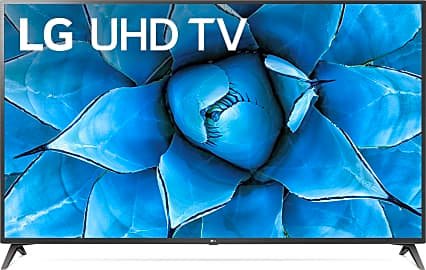The 10 Best 75 Inch TVs

This wiki has been updated 32 times since it was first published in January of 2017. A 75-inch TV makes the perfect centerpiece to a home theater, and you're likely to spend many hours in front of it enjoying immersive entertainment. For that reason, it's important to invest wisely. A number of cutting-edge technologies are making the large flat screen experience better and more affordable than ever, and these televisions are among the best of the crop. When users buy our independently chosen editorial recommendations, we may earn commissions to help fund the Wiki.
Editor's Notes
October 27, 2020:
We're finally reaching a point where 6-foot televisions are in the realm of affordable for many people, although, of course, you'll need to have plenty of space to put it, even if you can afford the investment. On the other hand, with something like Samsung's The Frame, you could get away with putting one of these huge screens somewhere it might not normally look great.
While The Frame is somewhat of niche offering, the Samsung Q80T and Samsung Q90T are both very good choices for discerning home theater and even gaming enthusiasts. All of these high-end Samsungs are slated to support HDMI 2.1, so if you manage to get your hands on one of the few HDMI 2.1 sources out there, they could be the path to 4K, 120-hertz gaming.
On the low side of the prices, The Samsung TU8000 and especially the LG UN7370 are about as low-priced as you'll find from a major manufacturer. However, we strongly recommend checking out the TCL R635 and TCL S535, both of which run the Roku operating system and are significantly more advanced than former TCL releases.
In the middle of the range we have the Sony X900H and LG Nano 90, both of which also offer HDMI 2.1 support, although if you're into watching movies in a cinema-like environment, avoid the LG Nano and go for the Sony. Oddly enough, this is one of the few new Sony models with HDMI 2.1 input, and it's not even the flagship.
Finally, the LG CX is almost universally considered the best in the world, and if you can afford it, we're sure you'll be happy with it.
June 07, 2019:
If you're looking for this size of display, you already know you're not going to make it out without dropping at least a little cash. But you can actually find some really great deals! Anything by TCL is bound to offer plenty of bang for your buck. The S425 is about as low-priced an option as you'll find from a major manufacturer, and the R617 is a significant improvement that's roughly in line with its price increase. In between the two is the Samsung RU7100, which is a high-quality unit as we've come to expect from the company.
The Sony X900F and X800G are two great mid-range options. The first is a little brighter but the second has a better viewing angle; these qualities are due to the type of panel technology they use. Samsung's Q60 offers incredibly bold colors as well as FreeSync compatibility, so Xbox One users will love it, and it's surprisingly affordable for such a good-looking unit.
Moving up in price, the LG SM9070 is future-proofed so you don't have to worry about it turning obsolete with the next wave of TV technology. And while they're incredibly expensive, the LG C9 and Samsung Q900 are both very special pieces of equipment. The C9 is the largest OLED panel yet available and the Q900 is the first widely available 8K display, and while there isn't much 8K content available yet, it boasts a number of other features that, like both high-end LGs, mean it will last you a long while.
As far as overall balance goes, though, it's hard to beat the Samsung Q80. Yes, it costs a few grand, but it looks simply fantastic; to get a better picture you'd have to move up to an extremely high price range. Its color reproduction is full and accurate, it has a good viewing angle, and its HDR support is excellent.
Special Honors
LG W9 When you look at the LG W9 "Wallpaper", you have to wonder if it might just be the future of TV production. Then you see the $13,000 price tag and realize that this 6-millimeter-thick future is probably pretty far off for most people. Nonetheless, if you're looking for the best, this is OLED at it's finest. lg.com
With TVs, Bigger Is Often Better
If you purchase a 4K set, closer viewing is rewarded, with a 5-foot distance being ideal for a 75-inch screen.
Size matters when it comes to television sets. But without considering distance, along with size, you could end up with a display that is far too big or small for your room.
The average American sits about nine feet from their TV, according to Bernard J. Lechner, a respected electronics engineer and former vice president of RCA Laboratories. Ideally, a TV will take up about 40 degrees of the viewer's field of view, based on the recommendation of industry authority THX, meaning the ideal TV for the average American would be a whopping 90 inches.
Unfortunately, a 90-inch television isn't practical for many consumers. There simply isn't enough space in the entertainment center or living room for such a massive set, and most displays of that size are impractical even to mount.
The 75-inch television marries generous screen real estate with a more forgiving form factor than the uncompromising behemoth that is the 90-incher recommended by THX.
If your viewing distance varies significantly from that 9-foot average measured by Lechner, use this simple formula to determine an ideal screen size: Multiply your seating distance in inches or centimeters by .84.
While Lechner's suggestion is widely respected, the ratio is not right for everyone. If you purchase a 4K set, closer viewing is rewarded, with a 5-foot distance being ideal for a 75-inch screen. It is important to test televisions before buying them, where possible, and make the final determination for yourself.
What Makes A Quality Picture?
Those shopping for televisions encounter a number of terms for the technology integrated into modern sets, and this can be confusing. Terms like 4K and HDR can leave your head spinning, but they are important to learn because they represent features integral to picture quality.
Among these valuable terms is 4K (also known as Ultra HD). Both terms refer to display resolution, or the number of horizontal and vertical lines on a screen. Full HD (or 1080p) preceded 4K on the market, and nearly every new TV you can purchase is either 1080p or 4K.
For those in a bright room, the LCD is likely a better choice, thanks to its backlight.
1080p displays have, as you may expect, 1,080 horizontal lines of resolution, while 4K boasts, somewhat confusingly, 2,160 horizontal lines. In this case, 4K refers to the total number of pixels, or color dots, in the display. The pixel-dense 4K resolution is most noticeable on large screens, particularly those 60-inches and greater, meaning a 75-inch TV is well suited for 4K.
Another technology that makes for a quality picture is High Dynamic Range, abbreviated HDR. Screens with HDR offer a significantly greater contrast between light and dark images, and present more realistic colors.
Learning about those display features is helpful, but perhaps more important is understanding the difference between the two most popular types of displays: LCD and OLED.
When Samsung ended its plasma TV production in 2014, a new era began. With no high-quality plasma screens to choose from, consumers were left to decide between LCD (short for liquid crystal display) and OLED (organic light emitting diodes) TVs.
LCDs are backlit by an LED array, while on OLED TVs pixels are lit individually. What does this mean for you? Consider the situation.
For those in a bright room, the LCD is likely a better choice, thanks to its backlight. If you're concerned about accurate color reproduction and seeing inky blacks where the director intended them, OLED is superior. If your TV is at the center of a wide room, where many viewers will be watching off center, OLED is the clear winner because of its superior viewing angles.
On a number of other measures, including lifespan and energy efficiency, both display types are similar.
A Brief History Of The Flat Screen TV
The first flat-panel display to reach market was the Aiken tube, developed in the early 1950s. It was used only briefly by the military, and attempts to bring it to consumers failed. By the early 1970s, color television was mainstream, having completely replaced radio, and in the following decades, the improved quality of cable television and home video made greater demands on display technology.
Despite leaving production in 2014, plasma TVs remain prized for their color reproduction and ability to represent shades of grey and black.
A primitive, monochromatic version of the plasma display was developed in 1964 at the University of Illinois, but this technology would not reach the mainstream until nearly four decades later. Despite leaving production in 2014, plasma TVs remain prized for their color reproduction and ability to represent shades of grey and black.
Similarly, early LED panels were demonstrated in the late 1970s, but LCDs only rose to prominence in the early and late 2000s, when the technology became affordable for many consumers. During that flat screen boom, cathode ray tube sets, which took up much more space and were only capable of resolutions up to 1080i, became obsolete.
By 2012, manufacturers based in Taiwan claimed half of the worldwide market share of flat-panel displays. As TV service providers improved their service resolution, and home viewing media evolved from VHS, to DVD and Blu-ray, consumers grew more discerning, seeking to get the most out of their content.
In November 2014, DirecTV became the first subscriber-based TV provider to offer 4K content. Later, on January 14, 2015, Sportsnet broadcast the first ever NBA game in 4K. Because of their colorful settings and fast-moving images, sports broadcasts pushed the boundaries of display technology. Sports viewers are rewarded by the high refresh rates and resolutions of modern televisions.
Sports viewers who owned flat screens were also among the first to enjoy live 3D content at home. ESPN 3D went live in 2010, at the height of 3D's popularity, broadcasting numerous live events. The network went off the air in September 2013, as interest in 3D waned.



